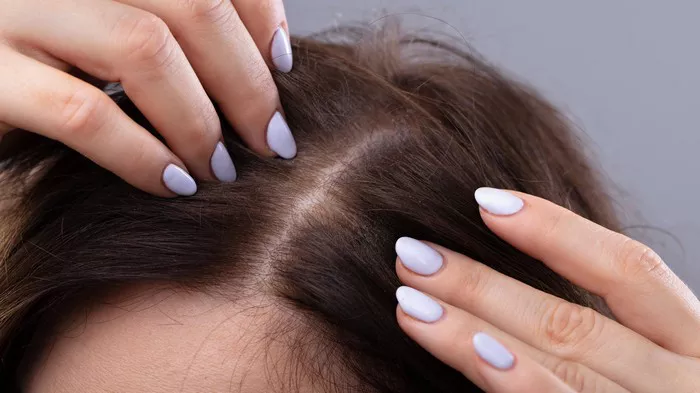The arrival of a newborn brings immeasurable joy, along with a myriad of questions for new parents. One common concern that often arises is infant hair loss. While it may be disconcerting to witness your little one losing hair, it’s essential to understand that this is a normal occurrence. In this article, we will explore the various reasons behind infant hair loss and provide reassurance to parents navigating this phase.
Newborn Hair Growth: An Overview
Before delving into the reasons for infant hair loss, it’s crucial to understand the typical hair growth cycle for newborns. Most infants are born with a fine layer of hair known as lanugo, which is shed within the first few weeks of life. This shedding is a natural process, and it gives way to the growth of permanent hair.
See Also: The Link Between Birth Control and Hair Loss: A Bible Guide
The Role of Hormones: Neonatal Hair Loss
Hormones play a significant role in neonatal hair loss. During pregnancy, the mother’s hormones influence the baby’s hair growth. After birth, as the baby’s body adapts to its own hormone production, the influence of maternal hormones diminishes. This hormonal shift can trigger the shedding of lanugo, resulting in temporary hair loss.
The transition from fetal to newborn life involves hormonal adjustments, and the infant’s body responds by shedding the lanugo to make way for the growth of thicker, more permanent hair. This shedding process typically occurs within the first three to six months of life.
Friction and Pressure: Infant Hairstyles
Another common reason for infant hair loss is friction and pressure on the baby’s head. Infants spend a considerable amount of time lying on their backs, especially during sleep. This extended period of contact with surfaces, such as crib mattresses, can create friction and pressure on the baby’s delicate hair.
To minimize friction-related hair loss, parents can consider rotating the baby’s sleeping position and ensuring that the bedding is soft and smooth. Avoiding tight hairstyles and opting for loose, comfortable options can also help prevent unnecessary stress on the baby’s hair.
Genetics and Hair Texture: A Family Affair
Genetics also play a role in determining the pattern and timing of infant hair loss. Some babies may experience more noticeable hair loss, while others may retain a fuller head of hair from birth. The texture and growth pattern of an infant’s hair are influenced by the genetic makeup inherited from both parents.
If parents notice a family history of slow hair growth or delayed development of thicker hair, it may offer insights into the infant’s own hair growth trajectory. Understanding that genetics contribute to the variations in infant hair growth can ease concerns about hair loss in the early months.
Cradle Cap: A Common Culprit
Cradle cap is a common skin condition in infants that can contribute to hair loss. It presents as yellowish, greasy, and scaly patches on the scalp. While cradle cap itself does not cause hair loss, the scales may become thick and adherent, leading to hair breakage or loss during removal.
To manage cradle cap and reduce the risk of hair loss, parents can gently massage the baby’s scalp with a mild, fragrance-free baby shampoo and use a soft brush to help loosen the scales. It’s essential to exercise caution and avoid excessive force to prevent unnecessary stress on the delicate hair.
Traction Alopecia: Beware of Tightly Pulled Hair
Traction alopecia is a form of hair loss caused by repeated pulling or tension on the hair. While uncommon in infants, it can occur if the baby’s hair is consistently styled in tight hairstyles, such as braids or ponytails. The constant pulling on the hair follicles can lead to damage and hair loss.
To prevent traction alopecia, parents should opt for loose hairstyles that do not exert excessive pressure on the baby’s delicate hair. Additionally, avoiding the use of tight headbands or hair accessories can contribute to a healthier hair growth environment.
When to Seek Professional Advice: Red Flags
In most cases, infant hair loss is a normal and temporary phase. However, there are instances where parents should seek professional advice. If hair loss is accompanied by signs of discomfort, redness, or inflammation on the scalp, it’s advisable to consult with a pediatrician. These symptoms may indicate an underlying skin condition that requires attention and appropriate treatment.
Conclusion
Understanding the reasons behind infant hair loss is crucial for new parents navigating the early months of their baby’s life. From hormonal shifts and genetic factors to cradle cap and the potential for traction alopecia, there are various explanations for this common occurrence. By recognizing the natural processes and implementing gentle care practices, parents can ensure their little ones experience a smooth transition from lanugo to a beautiful head of permanent hair. If concerns persist or are accompanied by unusual symptoms, seeking guidance from a pediatrician can provide reassurance and appropriate guidance.


